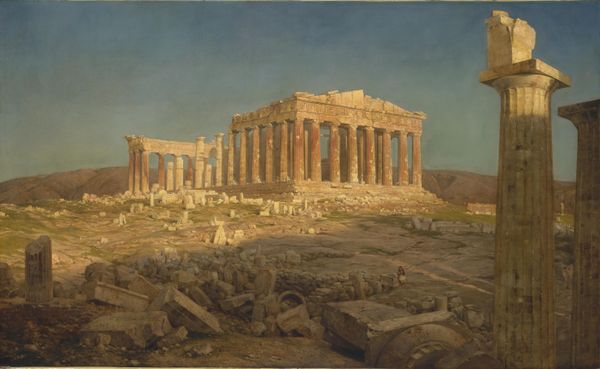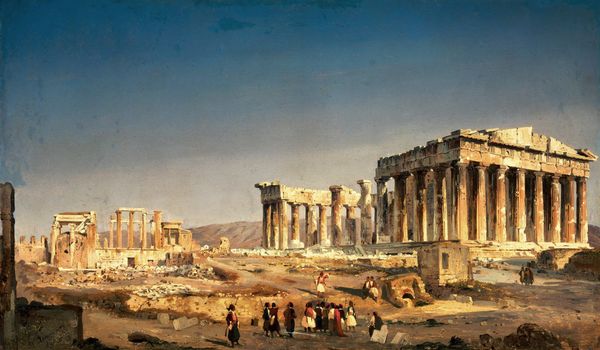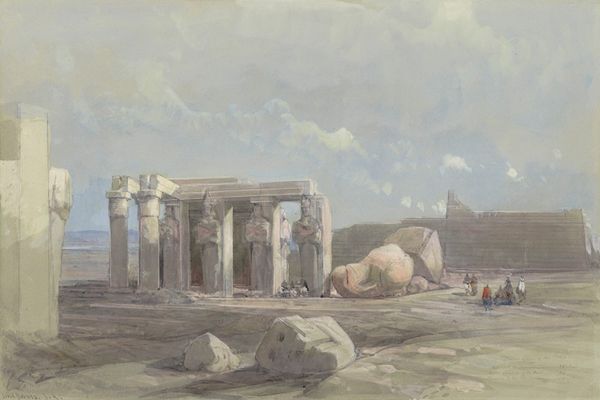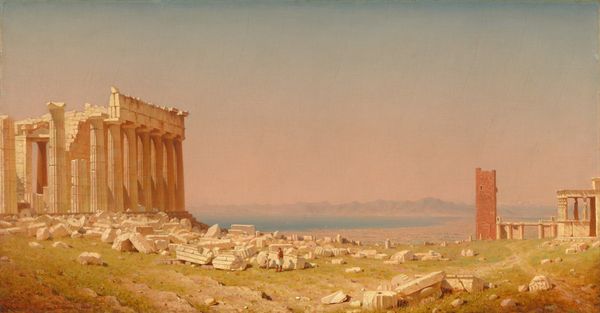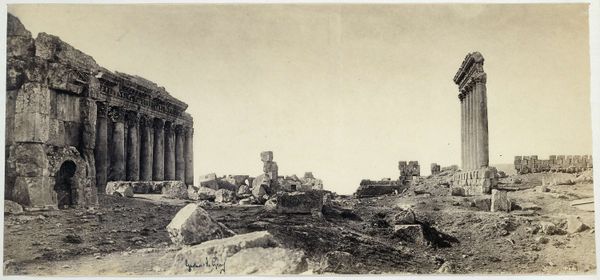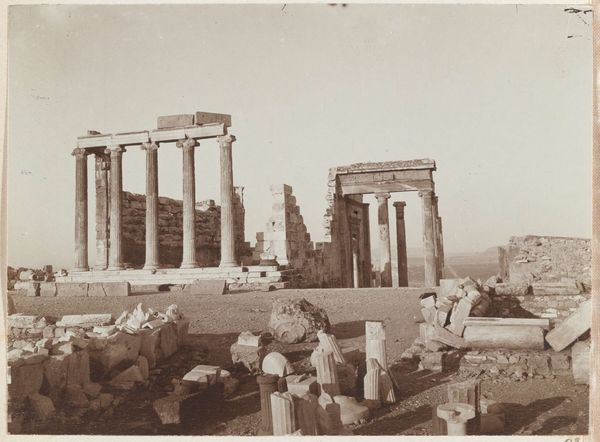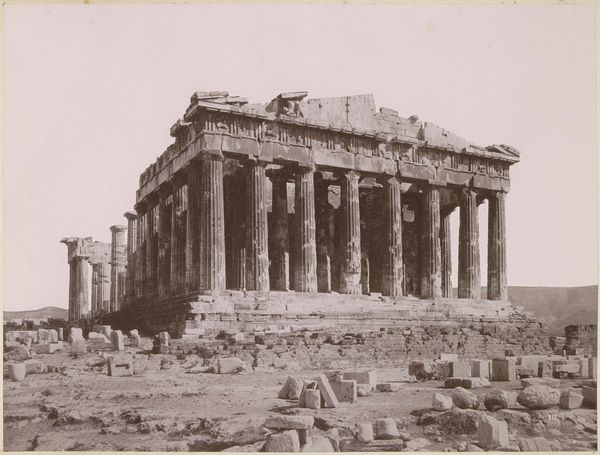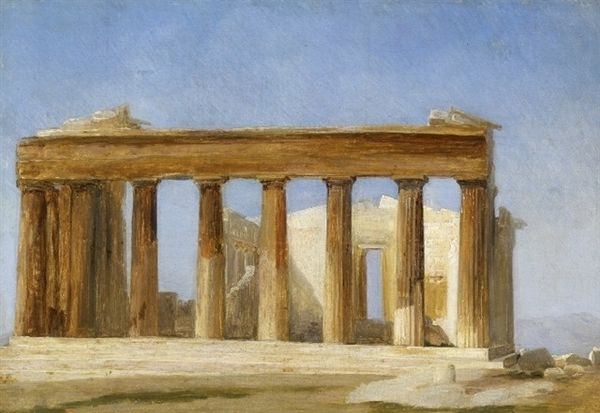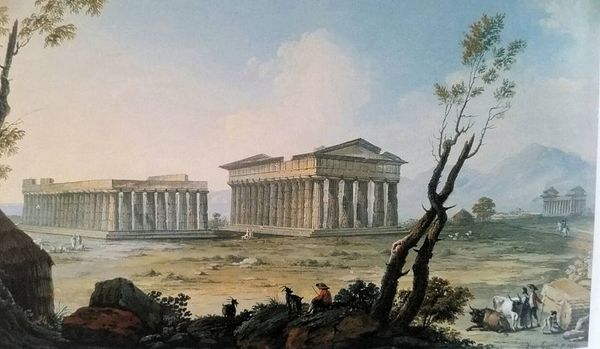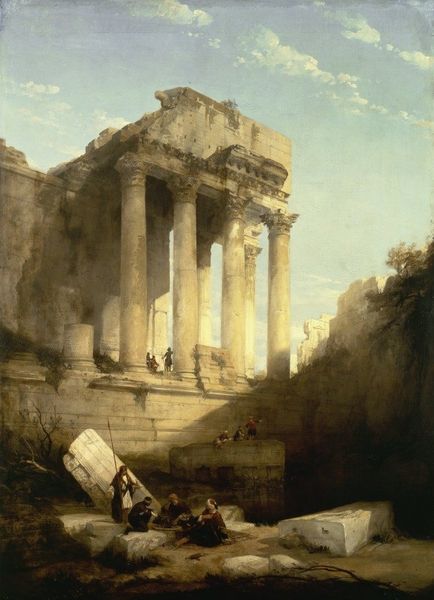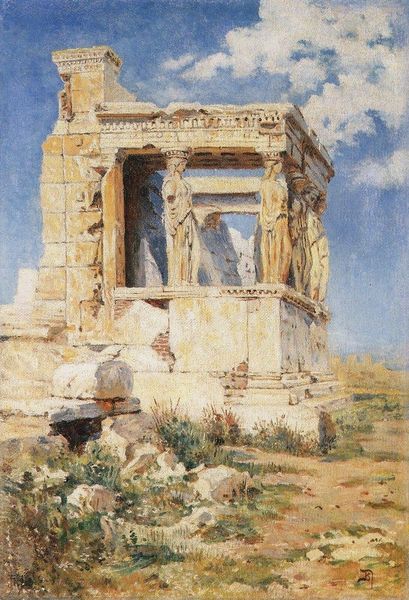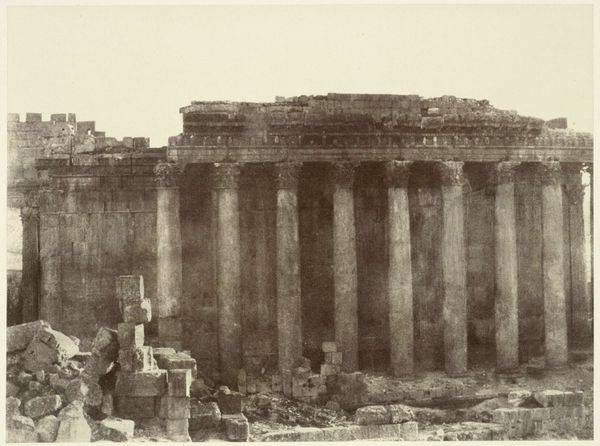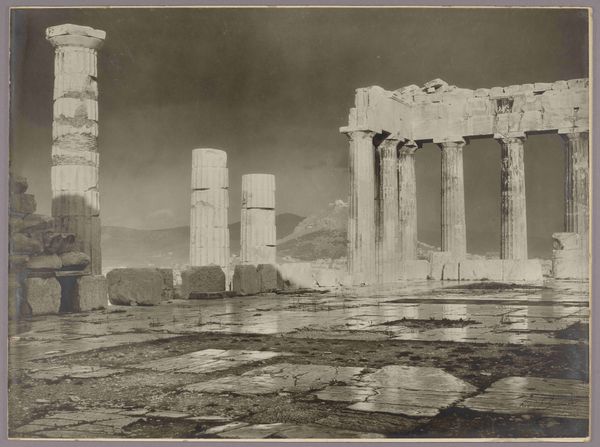
plein-air, oil-paint, architecture
#
plein-air
#
oil-paint
#
landscape
#
classical-realism
#
oil painting
#
history-painting
#
architecture
Copyright: Public domain
Editor: So here we have Vasily Polenov's "Parthenon. Temple of Athena Parthénos," created in 1882 with oil paint. I'm immediately struck by the somewhat melancholic mood and how the artist depicts the ruins. What do you see in this piece, looking at it from a Formalist perspective? Curator: Focusing on the purely visual aspects, note how Polenov utilizes a muted palette, primarily earth tones and grays. This desaturation, combined with the soft brushstrokes, contributes to the overall sense of faded glory. Consider the structural elements. How do the massive, clearly defined verticals of the columns contrast with the horizontality of the entablature and the sprawling chaos of the rubble in the foreground? Editor: That contrast is so noticeable! Is that sense of order and chaos deliberate? Curator: Indeed. Observe how Polenov directs the viewer's eye. The gaze is drawn upward towards the architectural order and the imposing structure of the temple before falling down toward the tumbled stonework at its base. In so doing, Polenov compels the viewer to mediate not only aesthetic questions regarding symmetry, texture, and tonal composition, but deeper philosophical inquiries regarding our perceptions of temporality and the transience of human endeavour. Editor: So it's about contrasting forms but also what they represent, decay versus aspiration. The light feels significant too, diffused and almost dreamlike. Curator: Precisely. The ambient light, achieved through plein-air painting techniques, softens the edges and creates a sense of atmospheric perspective. How does that atmospheric quality impact the geometric precision of the Parthenon itself? It certainly contributes to its solemn presence, imbuing this ancient site with both grandeur and decay, as you keenly observed. Editor: It makes me appreciate the way Polenov used these visual elements to make something both grand and intimate. Curator: Yes, by understanding these aspects and by applying the rigorous tools of formalist inquiry, we move toward an appreciation of art not simply as representative of something external, but as intrinsically and purposefully meaningful within itself.
Comments
No comments
Be the first to comment and join the conversation on the ultimate creative platform.

